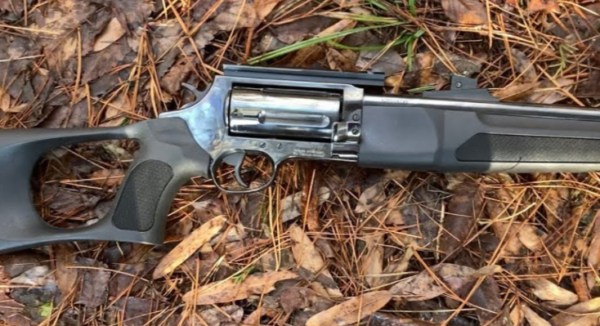The Walther PPQ 45, despite its impressive design and functionality, is not without its share of problems.
Known for its superior ergonomics and remarkable trigger, it is a popular choice among firearm enthusiasts. However, some users have reported experiencing a few issues with this model.

This section aims to highlight the most common Walther PPQ 45 problems and provide effective solutions to help you get your piece back to optimal performance.
Walther Ppq 45 Problems
The Walther PPQ 45 is generally well-received for its ergonomics and shooting accuracy.
However, some users have reported issues with its trigger reset, experiencing a longer reset travel than preferred.
Additionally, others noted that its high bore axis might contribute to increased perceived recoil. As with any firearm, individual experiences can vary widely.
1 . Jamming and Failure to Feed


Cause
The most common cause of jamming and failure to feed in the Walther PPQ 45 is due to the usage of low-quality, or improperly sized ammunition.
This often results in the bullet not aligning correctly with the barrel, causing a jam.
Dirt or debris in the magazine can also prevent the rounds from feeding properly into the chamber.
Remember, the quality and condition of your ammunition play a significant role in the functioning of your firearm. Dirty or damaged magazines can equally contribute to feeding issues.
Solution
To rectify this, first ensure you’re using high-quality, proper-sized ammunition for your Walther PPQ 45.
Regular cleaning of your gun and its magazines can help eliminate any dirt or debris that could be causing the jam.
If the problem persists, consider getting your gun inspected and serviced by a professional.
Quality ammunition and regular maintenance are crucial for preventing jams. If issues persist despite these steps, seek professional help.
2 . Trigger Reset Issues
Cause
One of the problems some owners of the Walther PPQ 45 encounter is with the trigger reset.
This usually occurs due to improper disassembly and reassembly of the gun during maintenance, which can potentially disrupt the reset mechanism.
Additionally, accumulated grime and dirt in the trigger assembly can impair the reset function.
Solution
The solution to trigger reset issues largely depends on proper maintenance and careful handling of the weapon.
Always follow the manufacturer’s instructions when disassembling and reassembling your firearm. Cleaning your gun regularly with a proper cleaning kit can help remove any dirt or grime that may be affecting the trigger mechanism.
If the problem persists, it is advisable to have your gun checked by a professional gunsmith.
They can thoroughly clean and adjust the trigger assembly, ensuring smooth operation.
3 . Magazine Release Concerns
Cause
The Walther PPQ 45 users occasionally face magazine release concerns, particularly a stiff or unresponsive magazine release button.
This commonly happens due to prolonged use, accumulated grime within the release mechanism, or a faulty magazine release spring.
A stiff or unresponsive magazine release button is a commonly reported problem, which can primarily be attributed to accumulated grime, a faulty magazine release spring, or simply wear and tear from prolonged use.
Solution
Addressing magazine release concerns involves a combination of regular maintenance and potentially replacing the magazine release spring.
Ensure you routinely clean the magazine release area to prevent the build-up of dirt and grime.
If the problem persists despite regular cleaning, consider replacing the magazine release spring as it may be worn or defective.
Remember, while you can perform the replacement yourself, it’s highly recommended to seek professional guidance for parts replacement to avoid damaging your firearm.
**Regular cleaning of the magazine release area can mitigate issues, but if problems persist, the magazine release spring may be worn or defective.
4 . Difficult Slide Lock
Cause
The difficulty in slide lock operation for the Walther PPQ 45 often stems from a stiff or worn-out slide lock spring.
This problem is most common in firearms that have seen extensive use. Furthermore, accumulated grime around the slide lock area can also make the operation challenging.
A stiff or worn-out slide lock spring and accumulated grime can make the slide lock operation difficult. Extensive use often exacerbates these problems.
Solution
Addressing the issue of a difficult slide lock involves both regular maintenance and possibly replacing the slide lock spring.
Regular cleaning of the slide lock area can prevent the accumulation of dirt or grime, thus ensuring smooth operation.
If the problem persists despite rigorous cleaning, it is advised to consider replacing the slide lock spring.
Always remember to seek the assistance of a professional gunsmith for parts replacement to prevent any potential damage to your firearm.
Regular cleaning and potential replacement of the slide lock spring are key solutions. Seek professional assistance for parts replacement to ensure the longevity of your firearm.
5 . Accuracy Inconsistencies
Cause
Accuracy inconsistencies with the Walther PPQ 45 may arise from a variety of factors. One common cause is the improper alignment of sights, which can lead to shots being off target.
Additionally, a worn-out barrel, or one that has accumulated grime and dirt, can also contribute to inaccuracy.
Furthermore, inconsistent grip and shooting technique can affect the precision of your shots.
Improper sight alignment, a dirty or worn-out barrel, and inconsistent grip and shooting technique are common causes of accuracy inconsistencies.
Solution
To rectify accuracy inconsistencies, start by ensuring that your sights are properly aligned.
Regular cleaning and maintenance of your barrel can also improve accuracy, as it helps remove grime and prevents wear and tear.
Additionally, it’s crucial to practice and maintain a consistent grip and shooting technique.
If accuracy problems persist even after these steps, consider having your firearm inspected by a professional, as the issue could be more complex and require expert intervention.
Proper sight alignment, regular barrel maintenance, consistent grip and shooting techniques, and professional inspection if problems persist are key to addressing accuracy inconsistencies.
6 . Extractor Failure
Cause
The Walther PPQ 45 may experience extractor failure, usually manifested in the inability of the firearm to properly eject spent cartridges.
This issue is often due to a worn-out or broken extractor, which may result from prolonged use or improper maintenance.
Additionally, accumulated grime and residue on the extractor can also lead to its malfunction, compromising the efficient ejection of spent casings.
A worn-out or broken extractor, prolonged use, improper maintenance, and accumulated grime can lead to extractor failure.
Solution
To resolve an extractor failure, you should start by doing a thorough cleaning of the extractor and the surrounding area to remove any possible residue or grime.
If the problem persists, or if you notice visible wear or damage on the extractor, consider replacing it.
However, replacing an extractor should ideally be done by a professional gunsmith to avoid any risks of further damaging the firearm.
Regular cleaning, spotting visible signs of wear, and professional replacement of the extractor are essential for resolving extractor failure.
7 . Recoil Spring Assembly Problems
Cause
The Walther PPQ 45 may encounter issues with the recoil spring assembly, primarily arising from prolonged use or a defective recoil spring.
These problems may be evidenced by an increased recoil or inconsistent cycling of the firearm.
In some cases, a poorly maintained firearm may also result in the buildup of grime and residue in the recoil spring assembly, further compromising its performance.
Prolonged use, a defective recoil spring, and poor maintenance leading to grime buildup are primary causes of recoil spring assembly problems.
Solution
Addressing recoil spring assembly problems usually involves replacing the recoil spring, especially if it’s worn out or defective.
However, this should ideally be done by a professional gunsmith to avoid any risks of further damaging the firearm.
Additionally, regular and thorough cleaning of the firearm can prevent grime buildup in the recoil spring assembly, thereby ensuring its smooth operation.
Regular cleaning and professional replacement of the defective recoil spring are the main solutions for recoil spring assembly problems.
8 . Barrel Peening Issues
Cause
Barrel peening on the Walther PPQ 45 often results from extensive use or improper cleaning methods, which can lead to the deformation of the barrel’s end.
This can negatively impact the ballistic performance of your firearm, causing accuracy issues. Furthermore, using reloaded or poor-quality ammunition can also lead to barrel peening.
Extensive use, improper cleaning, and the use of poor-quality ammunition are common causes of barrel peening.
Solution
To address barrel peening issues, it’s crucial to follow recommended cleaning procedures and use quality ammunition.
Regular inspection for signs of deformation on the barrel end can also help detect early signs of peening
. If barrel peening is already present, a visit to a professional gunsmith for potential barrel replacement is advisable.
Proper cleaning, using quality ammunition, regular inspection, and professional intervention for barrel replacement are key solutions to barrel peening issues.
9 . Ineffective Night Sights
Cause
Ineffective night sights on the Walther PPQ 45 typically indicate that the sights’ luminosity has diminished, making them less visible in low-light conditions.
This issue often arises from prolonged use, where the phosphorescent material responsible for the sights’ glow wears out over time.
Additionally, exposure to harsh environments or improper handling can also lead to the degradation of the night sights’ effectiveness.
Diminished luminosity, prolonged use, exposure to harsh environments, and improper handling are common causes of ineffective night sights.
Solution
For resolving ineffective night sights, the first step is usually to attempt cleaning the sights to remove any surface grime that could be diminishing their glow.
If cleaning doesn’t restore their effectiveness, the next step is to consider replacing the sights, particularly with tritium night sights, which have a longer lifespan.
However, sight replacement should ideally be carried out by a professional gunsmith to avoid any potential damage to the firearm.
Cleaning the sights, considering replacement with tritium night sights, and professional installation are key solutions for ineffective night sights.
10 . Difficulty in Field Stripping
Cause
Field stripping the Walther PPQ 45 can sometimes be challenging, especially for those unfamiliar with the process or new to firearm maintenance.
This difficulty can result in improper assembly or potential damage to the firearm parts
. Factors contributing to these difficulties often include a lack of training or experience, complex firearm design, or the presence of tightly fitted parts.
Lack of training or experience, complex firearm design, and tightly fitted parts are typical causes of difficulties in field stripping.
Solution
To tackle the difficulty in field stripping, it’s crucial to seek comprehensive training and guidance, whether from professional instructors, firearm manuals, or reliable online resources.
The correct use of appropriate tools can also ease the process, as can maintaining a clean and well-lit workspace to keep track of all parts.
Finally, carefully inspecting the firearm for any loose fittings or wear and tear can also help in field stripping.
Getting training and guidance, using proper tools, maintaining a clean workspace, and inspecting the firearm are important solutions for field stripping difficulty.
11 . Grip Texture Wears Down Quickly
Cause
The grip texture of the Walther PPQ 45 may wear down quite swiftly, primarily due to frequent use or exposure to harsh conditions.
This could potentially result in a slippery grip, thereby impacting the firearm’s handling and overall shooting experience
. Frequent heavy usage, exposure to harsh elements, and lack of regular maintenance are common causes of rapid grip texture wear.
Solution
To prolong the lifespan of the grip texture, it’s recommended to ensure proper care and cleaning of the firearm.
Using the firearm with clean, dry hands and storing it in a cool, dry environment can also help preserve the grip texture.
If the grip texture has noticeably worn down, consider replacing the grip or adding a grip sleeve for better hand traction.
Regular cleaning, careful handling, and timely replacement or augmentation with a grip sleeve are key solutions to grip texture deterioration.
12 . Break-In Period Required
Cause
A break-in period is often required for the Walther PPQ 45, particularly for it to operate at its peak performance.
This period represents the time during which the new firearm is gradually accustomed to firing rounds, helping the internal components to settle and work together more smoothly.
The requirement for a break-in period usually results from the tight tolerances and precision with which the firearm is produced.
The new firearm’s tight tolerances, precision fabrication, and the need for internal components to settle are common causes necessitating a break-in period.
Solution
The best way to navigate the break-in period is simply to use the firearm regularly and maintain it properly.
This includes cleaning the firearm after each use, especially in the initial stages. Over time, as rounds are fired, the firearm’s performance should improve and become more consistent.
However, it’s important to remember that the break-in period can vary depending on the particular firearm and individual use.
Regular use, proper maintenance, and patience during the initial stages are key to successfully navigate the break-in period for the Walther PPQ 45.
13 . Limited Magazine Capacity
Cause
The Walther PPQ 45 has a magazine capacity limit due to its design.
Unlike higher-capacity handguns, this firearm was engineered for tactical precision and concealed carry, resulting in a more compact size.
This construction only allows for a 12-round magazine, hindering extended shooting sessions or situations where more rounds could be advantageous.
Solution
To overcome this issue, several solutions can be implemented. Firstly, purchasing additional magazines can ensure that you have more ammunition readily available.
Secondly, practice quick and efficient reloading drills to minimize downtime during shooting. Lastly, some aftermarket companies offer extended magazine options, providing a potential increase in capacity.
Remember, while capacity matters, skill and precision often prove more critical in tactical scenarios.
14 . Failure to Return to Battery
Cause
The Failure to Return to Battery in Walther PPQ 45 can be caused by several factors. One common cause is the buildup of dirt, grime, or carbon in the firearm.
This can hinder the smooth movement of the slide, preventing it from returning to its original position after a shot.
Another prevalent issue could be the use of incorrect or low-quality ammunition which doesn’t provide enough power to cycle the slide back.
Solution
To address this problem, regular cleaning and maintenance of the firearm is essential. Always ensure that your Walther PPQ 45 is free of unwanted buildup that can affect its operation.
Using a good quality gun cleaning solvent and lubricant can help maintain the slide’s smooth movement. It’s also recommended to use high-quality ammunition to guarantee enough force to cycle the slide.
If the problem persists, consider getting a professional gunsmith to inspect and repair your firearm.
Conclusion
The Walther PPQ 45, while generally impressing most users with its remarkable accuracy and ergonomics, does present a few challenges.
Although few and far between, these problems should not be overlooked.
It is important to thoroughly examine and understand these issues before making a decision to invest in this firearm.
Despite some minor hiccups, it’s fair to say that the Walther PPQ 45 commands respect in its category and continues to be a popular choice for many firearm enthusiasts.
FAQs
Did Walther discontinue the PPQ 45?
No, Walther has not discontinued the PPQ 45. It is still available for purchase.
Is the PPQ reliable?
Yes, the Walther PPQ is known for its reliability and accuracy. It is a popular choice for many shooters due to its versatility and performance.
What common problems are associated with the PPQ 45?
The most common issue associated with the PPQ 45 is a failure to charge. This can be caused by broken or worn out charging handles, incorrect ammo, or improper cleaning of the gun.
How can I fix a failure-to-charge issue?
There are several things you can do to attempt to fix a charging issue with the PPQ 45.


Biographical Info: Waseem1001, Owner of My Guns Geek
Name: Waseem1001
Email: wwwfffwww117@gmail.com
Mailing Address: Cooker Insider, 4773 Sigley Road, White Cloud, KS 66094
About Waseem1001
Welcome to My Guns Geek, your gateway to the world of firearms and everything related. Meet the person who is passionate about firearms, gear, and the responsible ownership of guns. Waseem1001, the owner of My Guns Geek, is here to provide you with a wealth of information and insights.
A Lifelong Fascination
Waseem1001’s fascination with firearms and outdoor gear began at an early age. Whether it was admiring the craftsmanship of firearms or exploring the utility of outdoor equipment, the world of guns and gear always held a special place in his heart. This deep-rooted passion eventually led to the creation of My Guns Geek.
Our Mission
At My Guns Geek, our mission is to empower gun enthusiasts and outdoor enthusiasts with accurate and comprehensive knowledge.
Waseem1001 values your feedback, questions, and suggestions. Your engagement and contributions are vital in shaping the future of My Guns Geek.
Thank you for being a part of the My Guns Geek community, and Waseem1001 looks forward to sharing this exciting journey with you.


